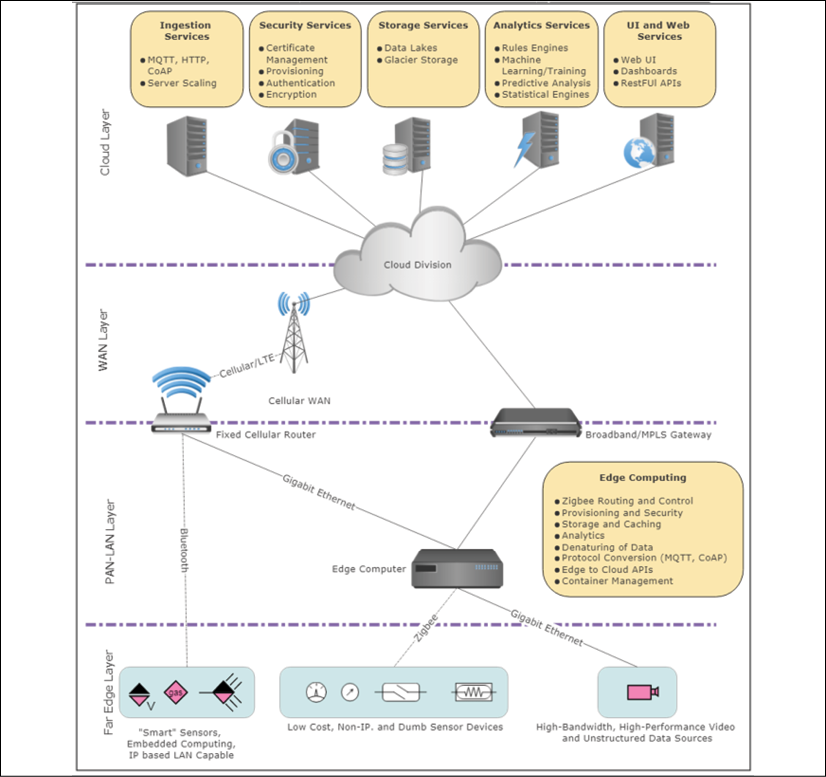A connected ecosystem
Nearly every major technology company is investing or has invested heavily in IoT and the edge computing space. New markets and technologies have already formed (and some have collapsed or been acquired). Throughout this book, we will touch on nearly every segment in information technology, as they all have a role in IoT.

Figure 1: Example of the architectural layers of an IoT/edge computing system. This is one of the many potential configurations that must be considered by the architect. Here we show the sensor-to-cloud routes through direct communication and through edge gateways. We also highlight the functionality provided by the edge compute nodes and the cloud components.
As illustrated in the preceding figure, here are some of the components within an IoT/edge solution that we will study:



